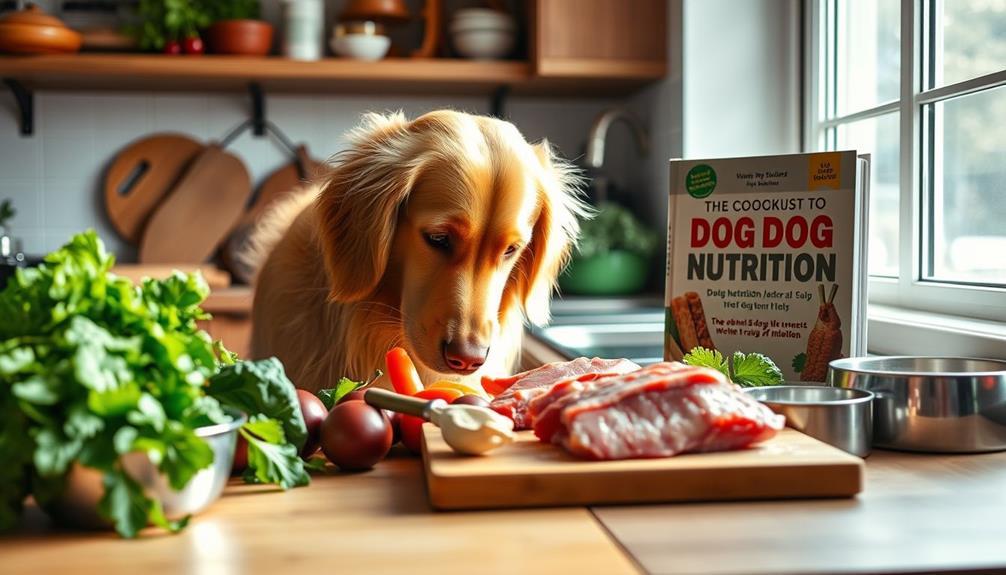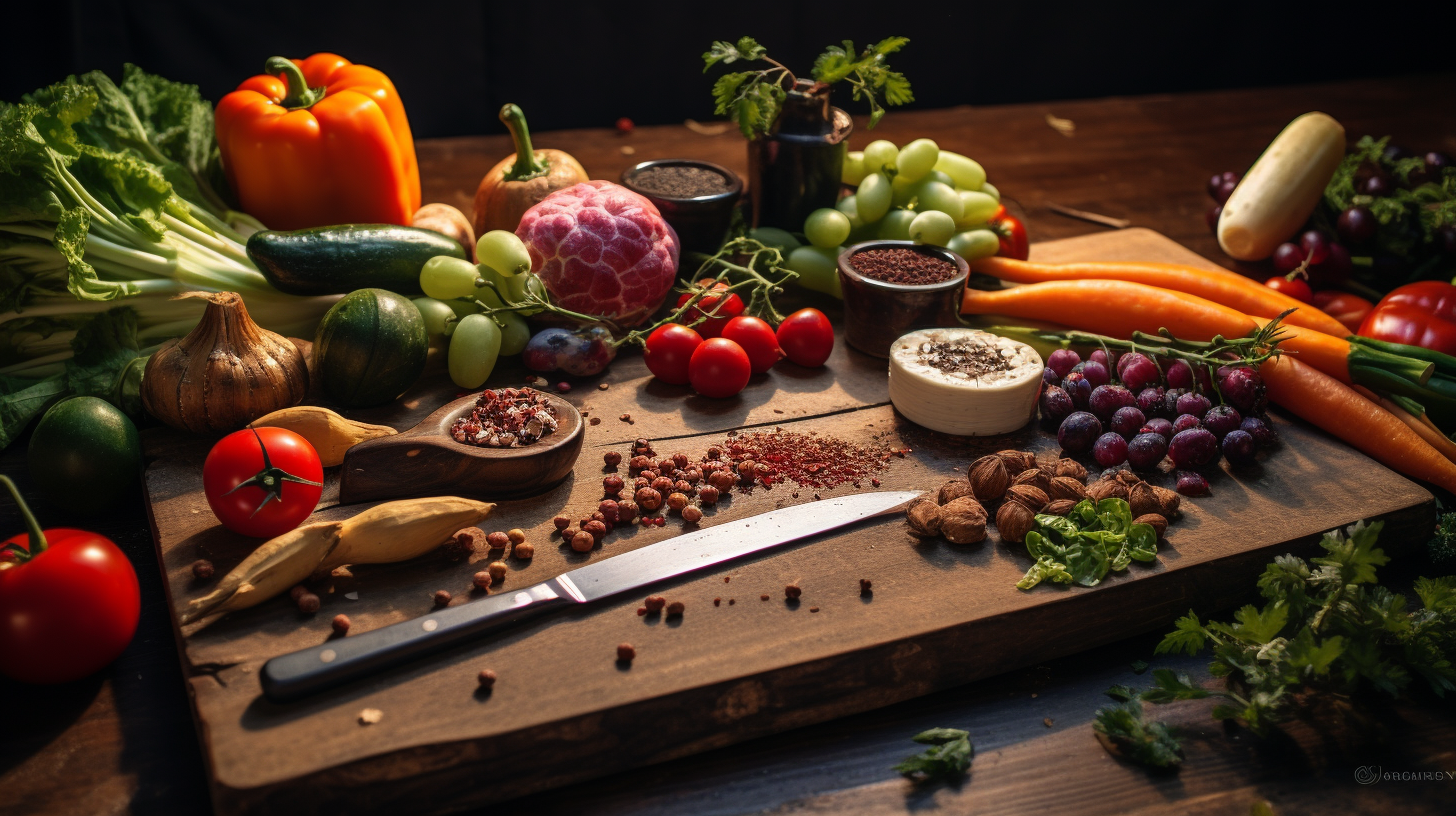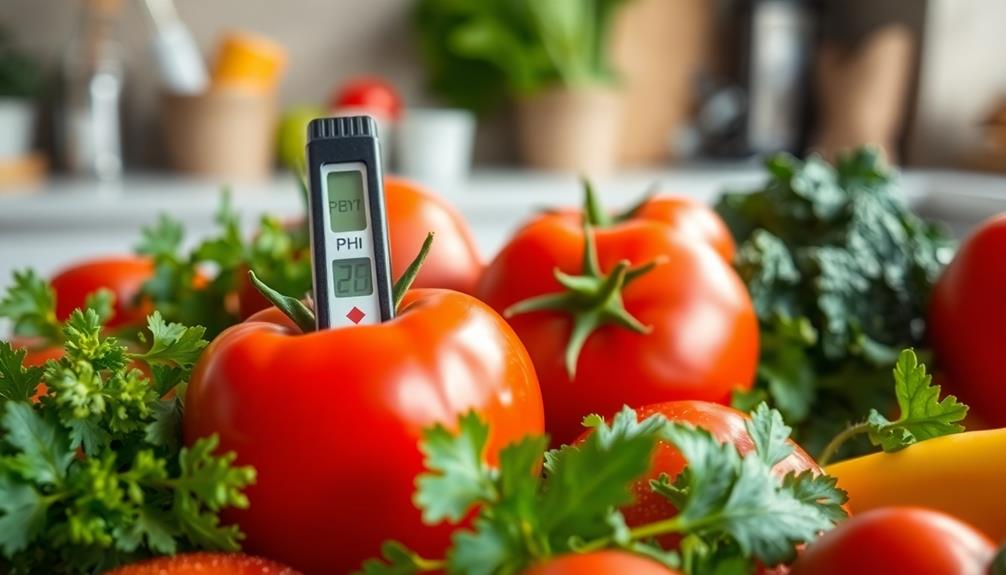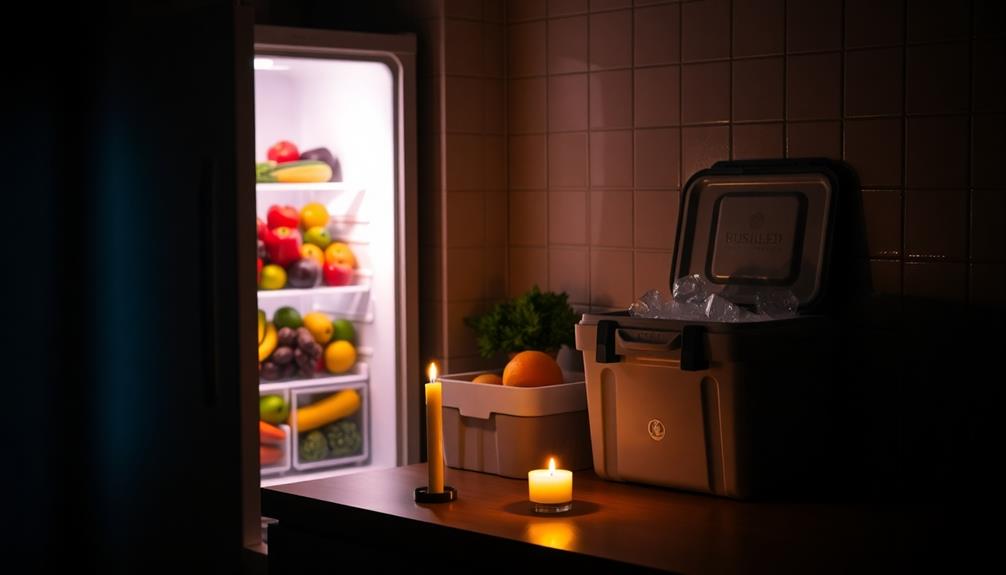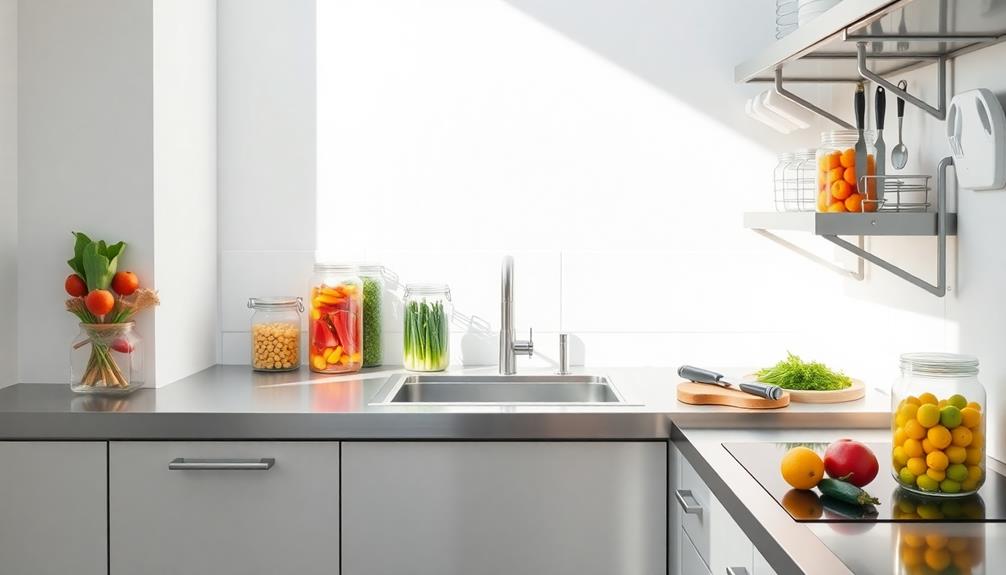Cleaning and sanitizing your raw food preparation tools is essential to prevent foodborne illnesses. Always use hot, soapy water to clean surfaces and utensils immediately after use, especially after handling raw meat. Don't forget to apply a bleach solution for thorough sanitization—mix 1 tablespoon of bleach per gallon of water. Make certain you keep a separate cutting board for raw meats to avoid cross-contamination. Regularly inspect and replace sponges or cloths to minimize bacteria buildup. By following these practices, you'll guarantee a safe food prep environment and stay ahead of potential health risks, and there's much more to explore on this topic!
Key Takeaways
- Use distinct cutting boards and utensils for raw meat to prevent cross-contamination with other foods.
- Clean surfaces and tools with hot, soapy water immediately after use, especially post-raw meat handling.
- Sanitize with a bleach solution (1 tbsp bleach per gallon of water) after cleaning to reduce bacteria.
- Regularly inspect and replace sponges and cleaning cloths to prevent bacteria buildup.
- Store raw meat on the bottom shelf of the refrigerator to avoid drips onto other foods.
Importance of Cleaning and Sanitization

Cleaning and sanitization are absolutely essential in raw food preparation to prevent harmful bacteria from contaminating your food. When you handle raw ingredients, it's imperative to understand that cross-contamination can easily occur if you don't take proper precautions.
Using hot, soapy water to clean surfaces and utensils that come into contact with raw foods is a must. Additionally, using proper cleaning techniques can greatly reduce the risk of foodborne illnesses. After cleaning, you should always sanitize these tools with a bleach solution to effectively reduce bacterial presence.
Regularly cleaning and sanitizing food preparation tools, like cutting boards and knives, is critical, especially when switching between raw and cooked items. This practice helps prevent the spread of pathogens that can lead to foodborne illnesses. You should also utilize separate tools for raw food preparation to further minimize risks.
Training in cleaning and sanitizing food procedures is important, as it helps you understand hygiene's role in food safety. By adhering to defined cleaning frequencies and maintaining sanitary food-contact surfaces, you protect not only your health but also that of your customers, fostering their trust in your establishment.
Safe Handling Practices
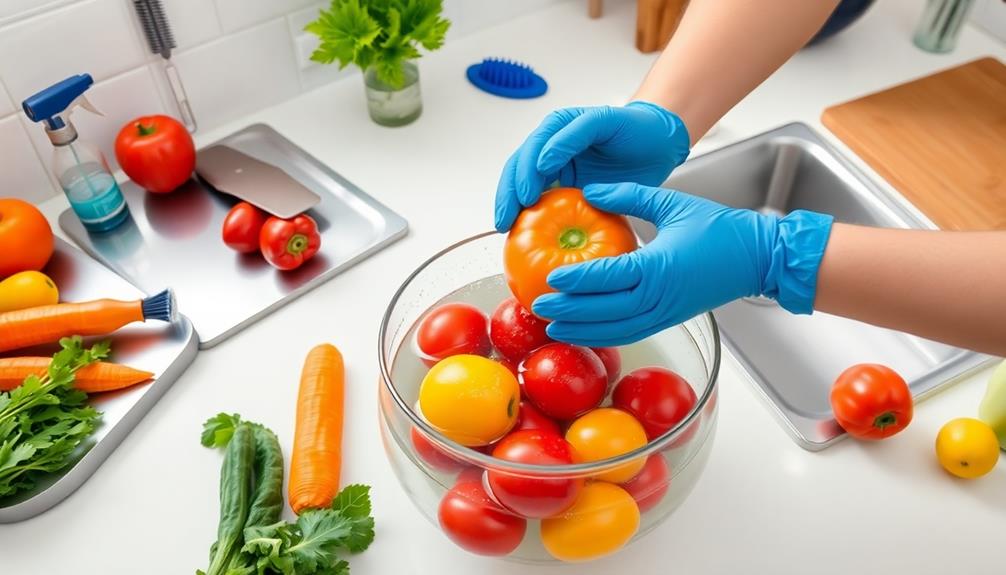
Proper food safety starts with safe handling practices that work hand-in-hand with effective cleaning and sanitization. To minimize the risk of cross-contamination, always keep raw meat separate from other foods. Use distinct cutting boards and utensils specifically for raw meat to prevent harmful bacteria from spreading to other ingredients.
Before and after handling raw meat, wash your hands thoroughly with soap and hot soapy water for at least 20 seconds. This step is vital for reducing the spread of pathogens.
After preparing raw meat, clean all surfaces that came into contact with it using hot soapy water, and follow up with a disinfectant to eliminate lingering bacteria.
Don't forget to sanitize cutting boards and countertops with a bleach solution—mix 1 tablespoon of bleach per gallon of water and let it sit for several minutes.
Additionally, regularly replace sponges and cleaning cloths used for raw meat cleanup to avoid harboring bacteria. If you prefer, use disposable paper towels for added safety.
Effective Disinfection Techniques

To guarantee a safe food preparation area, effective disinfection techniques are vital after handling raw food. Start by cleaning all surfaces with soap and water to remove any visible debris.
Once cleaned, apply EPA-approved disinfectants to those surfaces, making sure they remain wet for the recommended contact time. This step is significant as it allows the disinfectants to eliminate harmful pathogens effectively.
For a simple yet effective solution, prepare a bleach solution by mixing 1 tablespoon of bleach per gallon of water. Apply this solution to the surfaces, letting it sit for several minutes before rinsing with clean water to remove any residue.
After disinfection, either air dry the surfaces or use clean towels that haven't been in contact with raw food.
When cleaning, opt for non-porous sponges and cloths, as these materials don't harbor bacteria like porous ones do, reducing the risk of cross-contamination.
Cooking and Storage Guidelines

When it comes to cooking and storing raw food, following guidelines can greatly reduce the risk of foodborne illnesses. Start by storing raw meat on the bottom shelf of your refrigerator to prevent drips from contaminating other foods. Confirm the fridge temperature stays below 40°F (4.5°C). Always cook meat to the appropriate internal temperature—use a food thermometer to confirm that poultry reaches at least 165°F (74°C) and ground meats reach a minimum of 160°F (71°C).
Label and date your raw meat items for proper rotation, consuming them within the recommended timeframes: 1-2 days for raw ground meats and 3-5 days for whole cuts. When thawing frozen raw meat, the refrigerator method is your safest option, keeping it below 40°F (4.5°C) and minimizing bacterial growth.
Here's a quick reference table to help you remember key points:
| Task | Guideline |
|---|---|
| Storage of Raw Meat | Bottom shelf in fridge |
| Cooking Temperature | Poultry: 165°F, Ground: 160°F |
| Meat Labeling & Dating | 1-2 days for ground, 3-5 days for cuts |
| Thawing Method | Refrigerator method |
Equipment Cleaning Procedures

Effective cleaning of kitchen equipment is vital for maintaining food safety and preventing contamination. To achieve this, use the three-compartment sink method: designate one compartment for washing, another for rinsing, and the last for sanitizing.
Regular cleaning is important to guarantee that your tools remain effective and safe, similar to how air purifier maintenance secures peak performance in maintaining air quality. When cleaning food processors, disassemble them first and scrub each part with warm soapy water, guaranteeing all surfaces are sanitized to eliminate lingering bacteria.
For slicers, wash removable blades in a dishwasher and wipe down non-removable parts with a soapy cloth, paying extra attention to food-contact areas. Regularly inspect your kitchen equipment, like mixers and slicers, to guarantee peak performance. Worn or damaged components can lead to food contamination, so stay vigilant.
After cleaning, always follow proper sanitization procedures. Use a sanitizing spray on all equipment to uphold food safety standards in your kitchen environment.
Staff Training and Awareness

Staff training is the backbone of food safety in any kitchen. By providing thorough training on proper cleaning and sanitization techniques, you greatly reduce the risk of cross-contamination.
Regular workshops on food safety and hygiene practices reinforce knowledge and compliance, fostering a culture of safety among your kitchen staff.
Utilizing manufacturer resources like charts and videos can enhance your team's understanding of effective cleaning and equipment care practices.
Make certain you engage your employees in continuous learning, keeping them updated on best practices to maintain high standards of hygiene and operational efficiency.
Encouraging staff to report safety concerns is crucial.
Implement daily checklists for cleaning tasks to guarantee everyone adheres to sanitation protocols, which minimizes risks in your kitchen environment.
Types of Food Soils

Understanding the various types of food soils is vital for maintaining a clean and safe kitchen environment. Food soils can be categorized into four main types: fat-based, protein-based, carbohydrate-based, and mineral salt-based. Each of these requires specific cleaning methods to guarantee effective removal.
Fat-based soils are generally easy to tackle with hot water. However, if stubborn residues persist, alkaline detergents might be necessary for complete cleaning.
In contrast, protein-based soils pose a greater challenge. These often require highly alkaline detergents and wetting agents for effective removal, so be prepared to put in some extra effort.
Carbohydrate-based soils, which include simple sugars, can usually be cleaned with warm water. For starch residues, though, you may need to use mild detergents for a thorough clean.
Finally, mineral salt-based soils demand specialized cleaning approaches, depending on their solubility properties. Identifying the type of soil present is vital for successful cleaning, as each type requires a tailored approach to guarantee your kitchen tools remain safe and hygienic.
Chemistry of Cleaning Agents
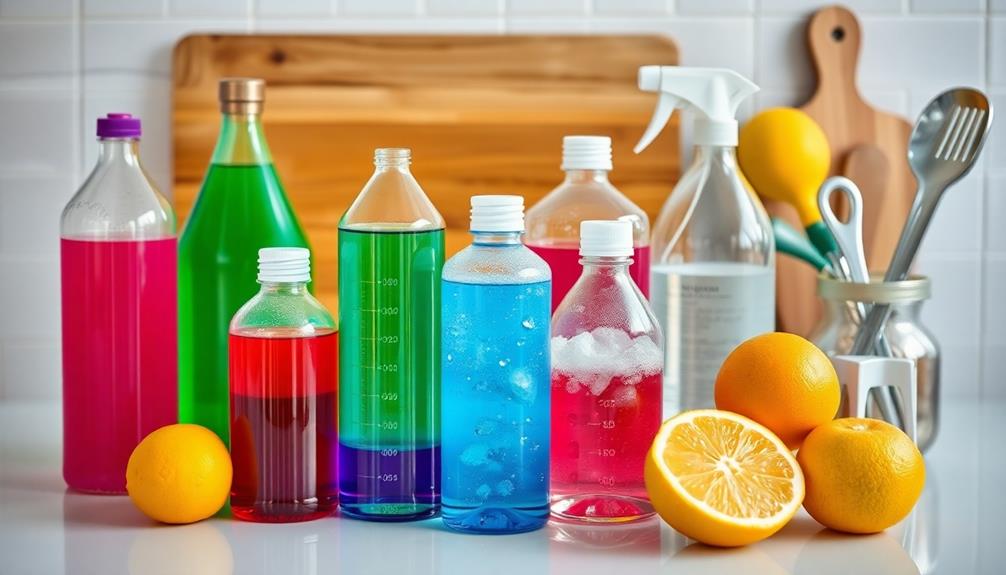
When you're cleaning your tools, understanding the active ingredients in your cleaning agents can make a big difference.
These ingredients not only help break down food soils but can also impact the environment, especially if they contain harmful components.
Active Ingredients Overview
Cleaning agents pack a punch thanks to their active ingredients, which play an essential role in removing dirt and grime from surfaces. One of the key components you'll find in these agents is surfactants. They help break down and lift soils from surfaces, making cleaning more effective.
In addition to surfactants, many detergents include sequestering agents like sodium tripolyphosphate. These ingredients bind metal ions in hard water, enhancing the overall cleaning effectiveness.
If you want to disinfect surfaces, look for cleaning agents with oxidizing agents such as hypochlorite. They destroy a wide range of microorganisms, ensuring your tools are sanitized.
Some detergents also contain enzyme ingredients like amylases, specifically designed to target food soils, particularly starches. The effectiveness of your cleaning agents can be influenced by factors like pH levels and water hardness.
Be aware that the presence of inactivators can also impact their ability to clean and sanitize effectively. By understanding these active ingredients, you can choose the right cleaning agents to keep your raw food preparation tools safe and hygienic.
Environmental Impact Considerations
Recognizing the significant environmental impact of cleaning agents is essential for anyone involved in food preparation. The chemistry behind these agents plays a significant role in their effectiveness and their potential harm to the environment.
To guarantee food safety and sanitation while minimizing ecological damage, consider these factors:
- Ingredient Composition: Many cleaning agents contain surfactants and phosphates that can adversely affect aquatic ecosystems. Choose products with environmentally friendly formulations.
- pH Levels: The pH of cleaning agents can influence their effectiveness and environmental impact. It's important to select products that maintain a balanced pH to reduce harmful effects during disposal.
- Regulatory Standards: Familiarize yourself with guidelines from agencies like the EPA, which govern the safety of detergents used in food processing. This helps promote compliance and responsible use.
Regular Maintenance Practices

To guarantee your raw food preparation tools remain safe and effective, regular maintenance is essential. Start by inspecting your cutting boards, utensils, and other food preparation tools for any signs of wear or damage. If you notice anything concerning, replace those items immediately to guarantee safe food handling.
It's vital to clean and sanitize your food preparation tools right after each use, especially after handling raw meat. This practice helps prevent cross-contamination. Additionally, replace sponges and cleaning cloths every 1-2 weeks to eliminate harmful bacteria. Store your tools in a clean, dry environment to minimize exposure to contaminants.
To maintain high sanitation standards, consider scheduling a deep clean of all your food prep tools and surfaces weekly. This not only keeps everything hygienic but also guarantees compliance with health regulations.
Here's a quick reference table for your maintenance routine:
| Maintenance Task | Frequency |
|---|---|
| Inspect tools | Weekly |
| Clean and sanitize | After each use |
| Replace sponges/cloths | Every 1-2 weeks |
| Deep clean surfaces | Weekly |
Frequently Asked Questions
What Are the 4 Steps to Cleaning and Sanitizing Utensils and Equipment?
To clean and sanitize utensils and equipment, you should follow these four steps: clean with hot soapy water, rinse thoroughly, sanitize with an approved solution, and let them air dry completely to prevent contamination.
What Are the 5 Steps of Cleaning and Sanitizing?
To clean and sanitize effectively, you'll first remove food residues, rinse surfaces, apply sanitizer, let it sit for the required time, and rinse again if needed. Finally, air dry or wipe with clean towels.
What Are the 5 Steps to Cleaning and Sanitizing Food Surface Areas?
To clean and sanitize food surfaces, start by removing debris, wash with hot, soapy water, rinse thoroughly, apply an EPA-approved sanitizer, and let it air dry or use a clean towel to guarantee safety.
What Methods Should Be Used to Clean and Sanitize Food Processing Equipment?
Isn't it essential to keep your food processing equipment spotless? You should wash, rinse, and sanitize by disassembling parts, using a dishwasher, and following manufacturer guidelines to guarantee safety and extend equipment lifespan.
Conclusion
In the world of raw food preparation, neglecting cleaning and sanitization could spell disaster. As you implement safe handling practices and effective disinfection techniques, remember that each step you take protects not just the food, but everyone who consumes it. What if a single oversight leads to a foodborne illness outbreak? By fostering a culture of cleanliness and awareness, you can guarantee that your kitchen remains a safe haven for health. So, are you ready to elevate your standards?


